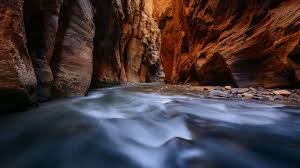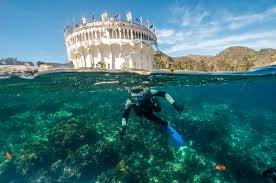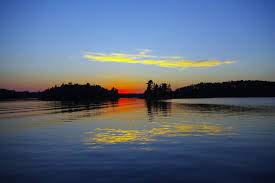10 best treks in USA:
Travelers can enjoy the diversity and size of the United States.
And guess what?
That’s exactly what makes it so unique.
It offers a wide variety of the top hikes in the USA, which are spread out all throughout the nation.
There is a large variety of various landscapes and temperatures that contribute to some of the best walks in the United States, from the eastern craggy shorelines to the undulating broad plains.
Here’s a list of 10 best Treks in USA:
1. Mount Rainier National Park, Washington
2.Haleakalā National Park, Hawaii
3.Shenandoah National Park, Virginia
4.Bryce Canyon National Park, Utah
5.Glacier National Park, Montana
6.Yosemite National Park, California
7.Grand Tetons National Park, Wyoming
8.Great Smoky Mountains National Park, Tennessee
9.Grand Canyon National Park, Arizona
10 .Zion National Park, Utah
1.Mount Rainier National Park, Washington
Mount Rainier National Park offers over 260 miles of maintained trails for your enjoyment. It is one of the 10 best Treks in USA.
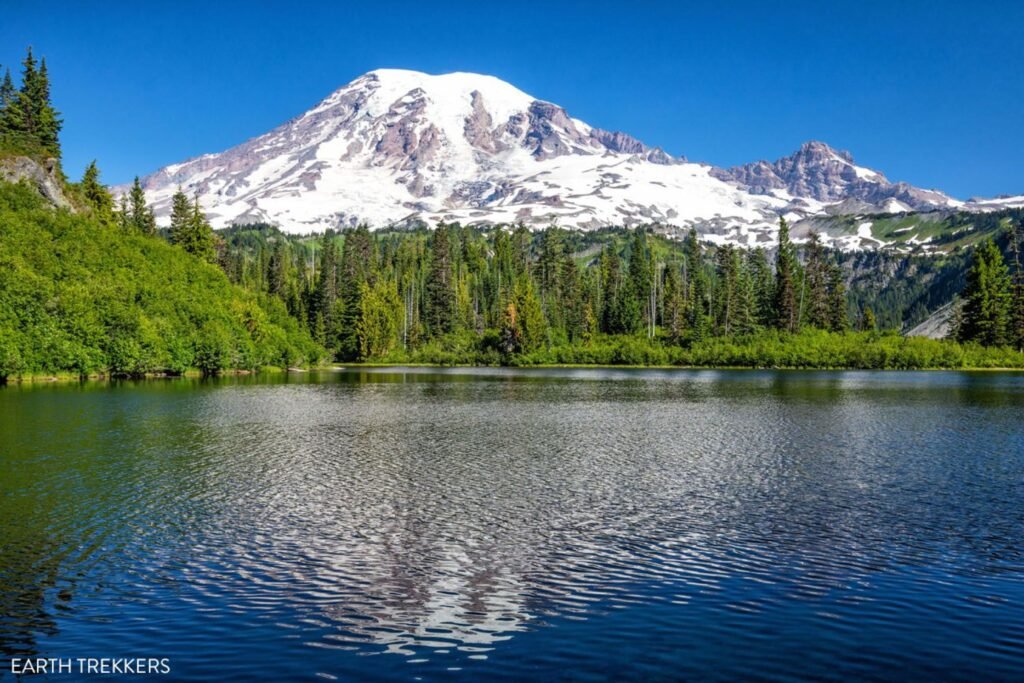
Trails lead through the peacefulness of the old-growth forest of the river valleys and the high subalpine meadows on the flanks of Mount Rainier.
From these trails explore and experience the forests, lakes, and streams and view the fields of wildflowers and network of glaciers. Pets and bicycles are NOT permitted on any park trails.
The park recommends that day hikers limit their party size to no more than 12 people per group. Day hikers are advised to keep hiking plans flexible because some trailhead parking lots may be full.
Overflow parking is not permitted in order to avoid impeding traffic and to provide a less crowded, higher quality experience for hikers. Alternative trailheads may have space available.
2.Haleakalā National Park, Hawaii
Perched at the highest point in Maui, Haleakalā National Park is one stunning place to hike, especially around sunrise or sunset.
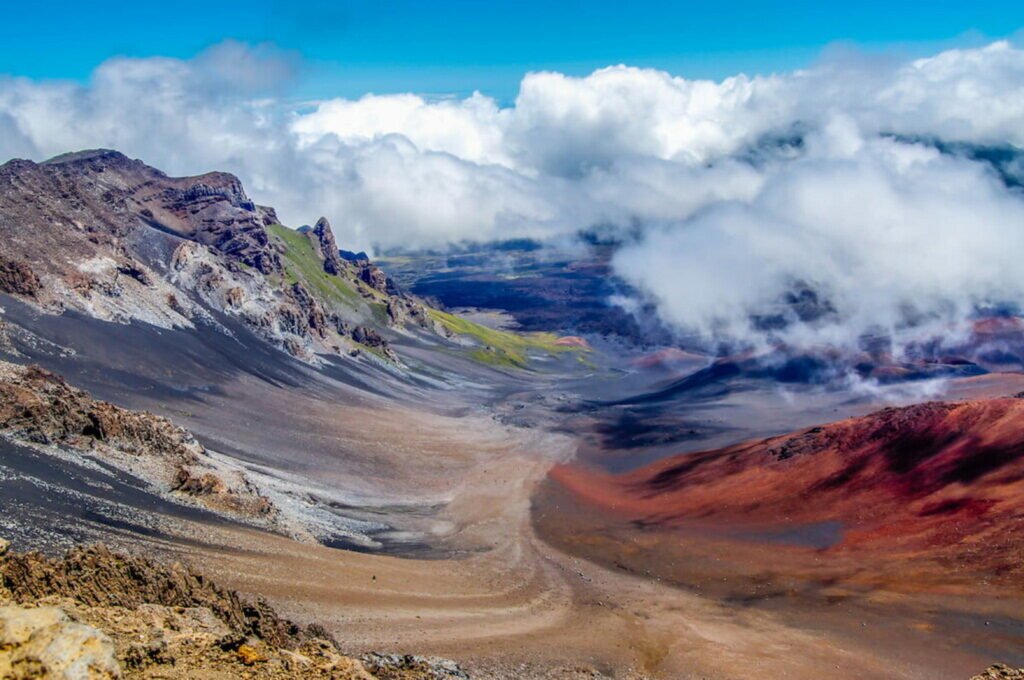
Haleakalā National Park preserves the outstanding volcanic landscape of the upper slopes of Haleakalā and protects the unique and fragile ecosystems of Kipahulu Valley, the scenic pools along Oheo Gulch, and many rare and endangered species.
Haleakalā is taller than Mount Kilimanjaro (19,341 ft / 5,895 m), Mount McKinley (20,320 ft / 6,194 m), and K2 (28,251 / 8,611 ft).
It’s even taller than Mount Everest (29,029 ft / 8,848 m). Combined, Haleakalā tops off at 29,704 ft (9,054 m) from its base on the ocean floor to its sky-high summit.
3. Shenandoah National Park, Virginia
Just 75 miles from the bustle of Washington, D.C., Shenandoah National Park is a land bursting with cascading waterfalls, spectacular vistas, fields of wildflowers, and quiet wooded hollows.
With over 200,000 acres of protected lands that are haven to deer, songbirds, and black bear, there’s so much to explore…and your journey begins right here!
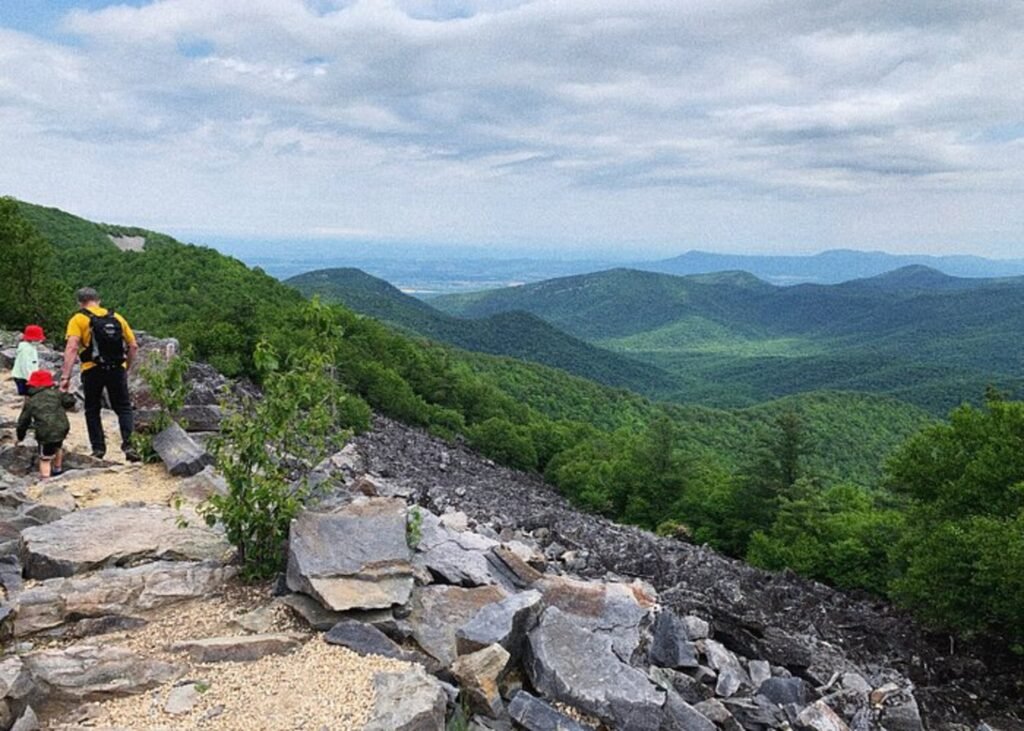
Shenandoah National Park extends along the Blue Ridge Mountains in the U.S. state of Virginia.
The Skyline Drive runs its length, and a vast network of trails includes a section of the long-distance Appalachian Trail.
Mostly forested, the park features wetlands, waterfalls and rocky peaks like Hawksbill and Old Rag mountains. Shenandoah is home to many bird species, plus deer, squirrels and the elusive black bear.
Five hundred miles of trails, consisting of 101 miles of the Appalachian Trail, lead visitors to waterfalls, panoramic views, protected wilderness, and preserved human history in the Shenandoah valley.
A park full of recreational opportunities for the entire family, Shenandoah is worth a repeat visit.
4.Bryce Canyon National Park, Utah
Bryce Canyon National Park in Southwestern Utah is famous for the largest collection of hoodoos—the distinctive rock formations at Bryce—in the world. Bryce Canyon is also home to horseshoe-shaped amphitheaters carved from the eastern edge of the Paunsaugunt Plateau, scenic vistas, and the dark night sky.
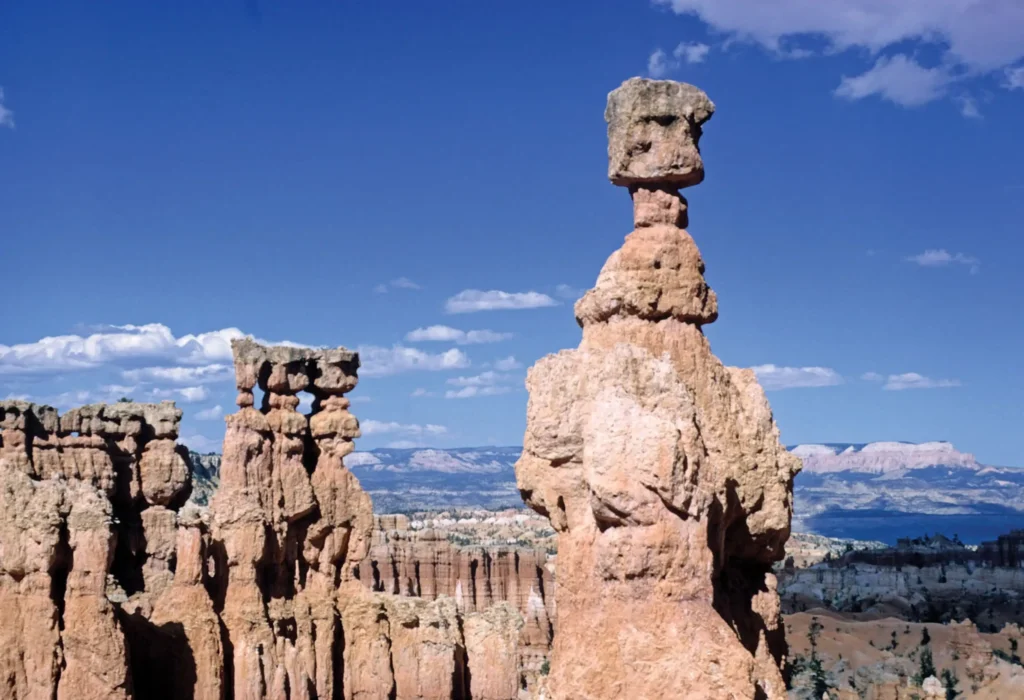
The best time to visit Bryce National Park is May through September.
Not only does this period offer the warmest weather of the year, it also yields plenty of ranger activities. October through April offers its own charms, too. It is also one of the 10 best Treks in USA.
Hiking in Bryce Canyon in Utah has two different difficulties. If you’re heading down into the amphitheater plan on moderate hikes.
The hike down is very easy, but the hike out is more difficult due to the elevation gain. We went down into the amphitheater twice and while the hike out is challenging, it is doable.
5. Glacier National Park, Montana
Glacier National Park is a 1,583-sq.-mi. wilderness area in Montana’s Rocky Mountains, with glacier-carved peaks and valleys running to the Canadian border.

It’s crossed by the mountainous Going-to-the-Sun Road. Among more than 700 miles of hiking trails, it has a route to photogenic Hidden Lake.
Other activities include backpacking, cycling and camping. Diverse wildlife ranges from mountain goats to grizzly bears.
Glacier National Park is located in the northwest corner of Montana along the spine of the Rocky Mountains.
The Park is approximately 40 miles northeast of Kalispell on U.S. Highways 2 and 89 and near U.S. Highways 91 and 93.
Glacier is much more rugged than Yellowstone. Hiking will demand much more physical ability and skill.
The whole park is much higher than Yellowstone, so animals and plant life will be quite a bit different than what you find in Yellowstone.
Considered to be the heart of the park, Many Glacier offers enormous mountains, active glaciers, and hiking trails, making it a favorite destination of both visitors and locals.
6.Yosemite National Park, California
Yosemite National Park is best known for its waterfalls, towering granite monoliths, deep valleys and ancient giant sequoias. On October 1, 1890, Yosemite became a national park, and more than 125 years later, it’s still wowing visitors. Check out some cool facts about this legendary California landmark.
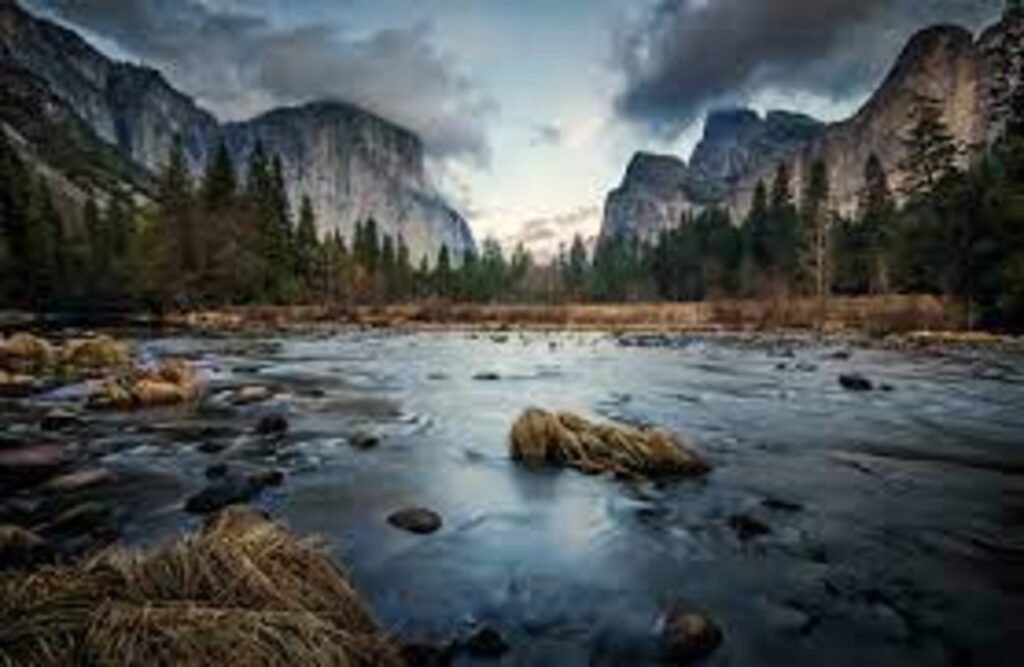
The overall best time to visit Yosemite is May through September, with May, June, and September being the ideal times to visit. Planning your visit during this time allows you to avoid 95% of the year’s rain in Yosemite.
Yosemite National Park has a hiking trail for everyone.
From short, easy walks to the waterfalls and viewpoints, to epic, all day hikes, there is no better way to explore Yosemite than on your own two feet.
7.Grand Tetons National Park, Wyoming
Grand Teton National Park is an American national park in northwestern Wyoming. At approximately 310,000 acres (1,300 km2), the park includes the major peaks of the 40-mile-long (64 km) Teton Range as well as most of the northern sections of the valley known as Jackson Hole.
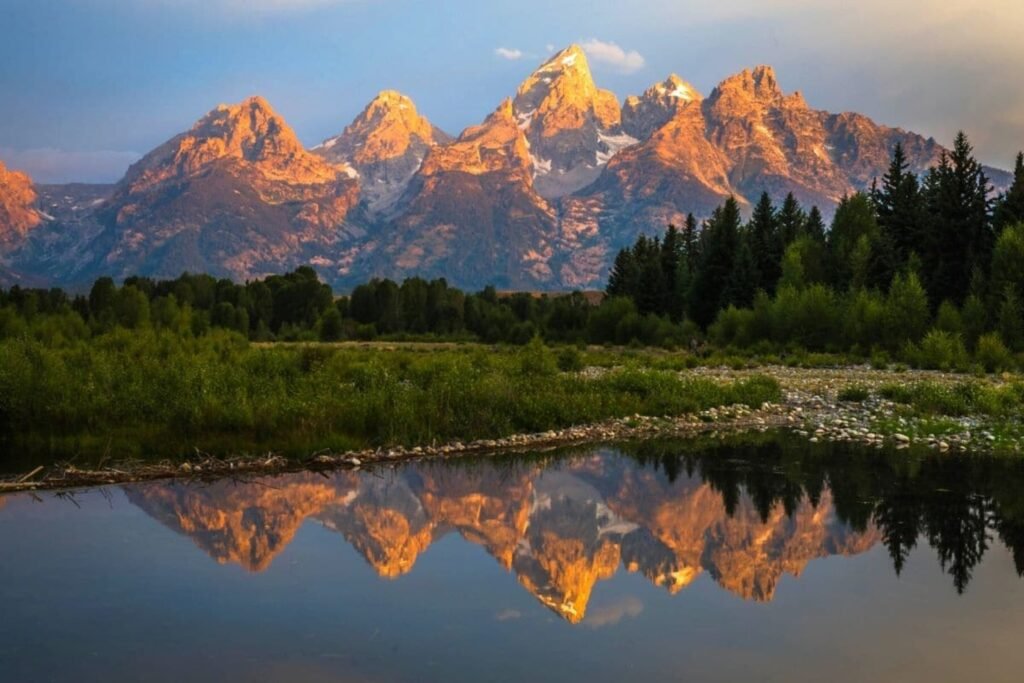
Grand Teton National Park is only 10 miles (16 km) south of Yellowstone National Park, to which it is connected by the National Park Service–managed John D. Rockefeller Jr. Memorial Parkway. Along with surrounding national forests, these three protected areas constitute the almost 18-million-acre (73,000-square-kilometer) Greater Yellowstone Ecosystem, one of the world’s largest intact mid-latitude temperate ecosystems.
The Teton Range – with peaks rising as high as 7,000 feet off the valley floor – is the centerpiece of the park. Views from either of the two main roads, which run north-south through the park, are nothing short of spectacular. The highest, most prominent peak is the Grand Teton, standing at 13,770 feet. South of the Grand are the Middle Teton, South Teton and Cloudveil Dome, among others. To the north of the Grand are Mt. Owen, Teewinot and flat-topped Mt. Moran. It is considered to be in the list of 10 best Treks in USA.
While the scenery is nice from the road, the park is best experienced on foot! Hundreds of miles of hiking trails wind around the lakes and through the mountains; the choices are almost limitless. From easy day hikes to multi-day backpacking trips, each trail has a distinct, uniquely dynamic character all its own. Incredible, often breathtaking scenery and wildlife sightings (elk, moose, black/grizzly bears, bison, deer, and more!) are guaranteed. Favorites, to name just a few, include Cascade Canyon, Granite Canyon and Amphitheater Lake.
8.Great Smoky Mountains National Park, Tennessee
Great Smoky Mountains National Park straddles the border between North Carolina and Tennessee. The sprawling landscape encompasses lush forests and an abundance of wildflowers that bloom year-round.
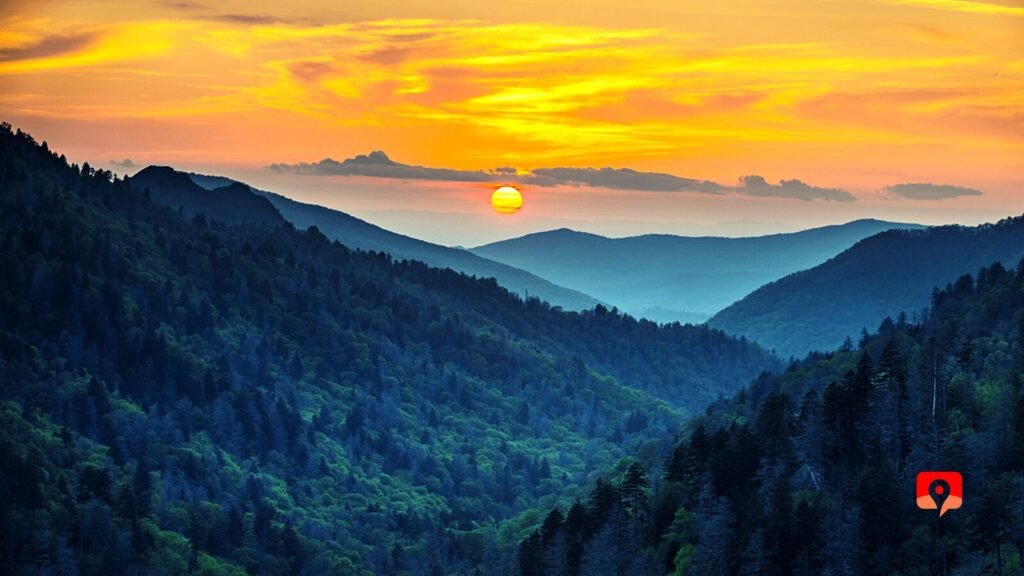
Streams, rivers and waterfalls appear along hiking routes that include a segment of the Appalachian Trail.
An observation tower tops Clingmans Dome, the highest peak, offering scenic views of the mist-covered mountains.
World renowned for its diversity of plant and animal life, the beauty of its ancient mountains, and the quality of its remnants of Southern Appalachian mountain culture, this is America’s most visited national park.
According to when most visitors come to the Smoky Mountains, the best time to visit the Smoky Mountains national park is during the months of June, July, and October. The months with the lowest visitation tend to be in the winter and spring.
9.Grand Canyon National Park, Arizona
Grand Canyon National Park, in Arizona, is home to much of the immense Grand Canyon, with its layered bands of red rock revealing millions of years of geological history.

Viewpoints include Mather Point, Yavapai Observation Station and architect Mary Colter’s Lookout Studio and her Desert View Watchtower. Lipan Point, with wide views of the canyon and Colorado River, is a popular, especially at sunrise and sunset.
Mount Hayden as seen from Point Imperial, Grand Canyon National Park, northwestern Arizona, U.S.
The Grand Canyon lies in the southwestern portion of the Colorado Plateau, which occupies a large area of the southwestern United States and consists essentially of horizontal layered rocks and lava flows. The broad, intricately sculptured chasm of the canyon contains between its outer walls a multitude of imposing peaks, buttes, gorges, and ravines.
It ranges in width from about 175 yards (160 metres) to 18 miles (29 km) and extends in a winding course from the mouth of the Paria River, near Lees Ferry and the northern boundary of Arizona with Utah, to Grand Wash Cliffs, near the Nevada state line, a distance of about 277 miles (446 km); the first portion of the canyon—from Lees Ferry to the confluence with the Little Colorado River—is called Marble Canyon. The Grand Canyon also includes many tributary side canyons and surrounding plateaus.
Yavapai Point, South Rim, Grand Canyon National Park, northwestern Arizona, U.S.
The greatest depths of the Grand Canyon lie more than a mile (some 6,000 feet [1,800 metres]) below its rim. The deepest and most spectacularly beautiful section, 56 miles (90 km) long, is within the central part of Grand Canyon National Park, which encompasses the river’s length from Lake Powell (formed by Glen Canyon Dam in 1963) to Lake Mead (formed by Hoover Dam in 1936).
The North Rim, at approximately 8,200 feet (2,500 metres) above sea level, is some 1,200 feet (365 metres) higher than the South Rim. In its general colour, the Grand Canyon is red, but each stratum or group of strata has a distinctive hue—buff and gray, delicate green and pink, or, in its depths, brown, slate-gray, and violet.
10.Zion National Park, Utah
Zion National Park is a southwest Utah nature preserve distinguished by Zion Canyon’s steep red cliffs.
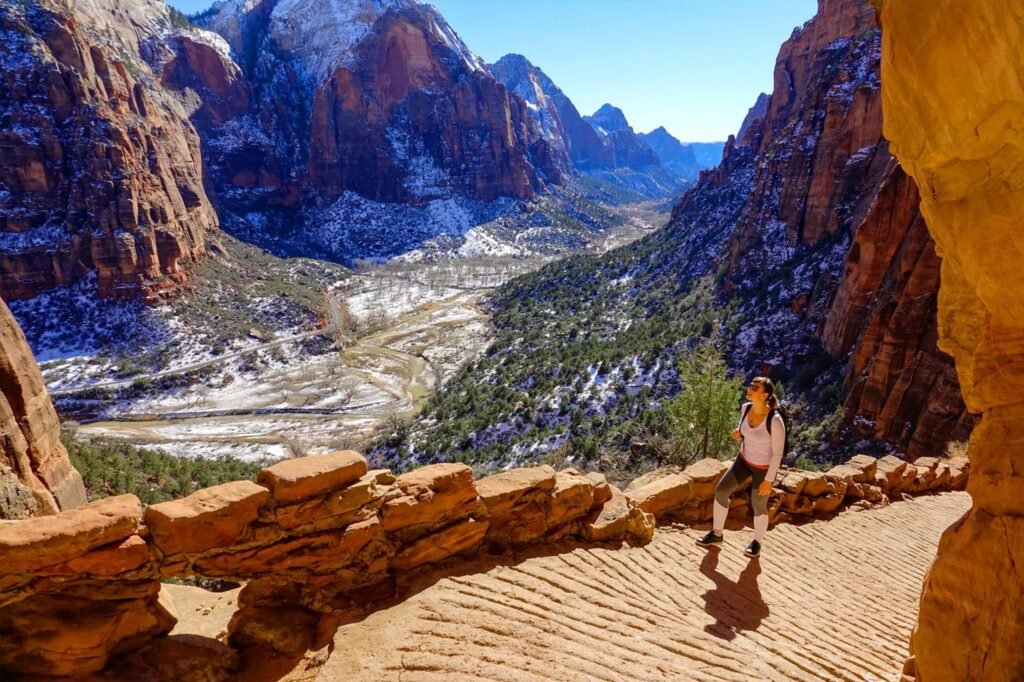
Zion Canyon Scenic Drive cuts through its main section, leading to forest trails along the Virgin River.
The river flows to the Emerald Pools, which have waterfalls and a hanging garden. Also along the river, partly through deep chasms, is Zion Narrows wading hike.
On November 19, 1919, President Woodrow Wilson signed a bill into law establishing Zion National Park.
The park encompasses some of the most scenic canyon country in the United States, featuring high plateaus, a maze of sandstone canyons and waterfalls with colorful hanging gardens.

